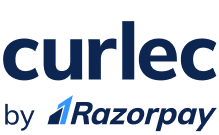In our increasingly digital landscape, the spectre of payment fraud looms large. As most, if not all transactions we make these days are online, cybercriminals tend to employ tactics to execute illicit transactions. This is why businesses and customers alike must understand the types of payment fraud and how to fortify payment security against them.
Understanding common types of payment fraud
- Identity Theft
Identity theft involves the unauthorised use of someone else’s personal information, such as their name, security, or credit card details, to commit fraudulent activities. Fraudsters may obtain this information through various means, including data breaches, phishing scams, or stealing physical documents.
Example: A cybercriminal gains access to a victim’s credit card information through a phishing email, and then uses it to make unauthorised purchases online. - Card Skimming
Card skimming is a technique used to capture credit or debit card information. This usually involves installing a skimming device on ATMs, gas pumps, or other card readers. It’ll then read and store the card’s magnetic stripe data when it gets swiped.
Example: A fraudster installs a skimming device on a gas pump, which captures the payment information of customers who use the pump. The fraudster then uses this stolen information to create counterfeit cards or make unauthorised transactions. - Account Takeover
Account takeover occurs when a fraudster gains unauthorised access to someone else’s financial accounts, such as bank accounts or online payment accounts, and takes control of them. This may involve stealing login credentials through phishing emails, social engineering, or malware.
Example: A victim unknowingly installs malware while browsing unprotected sites. A fraudster then obtains the victim’s login credentials and uses them to access their online banking account. The fraudster then can change the account settings, such as the password or contact information, to prevent the victim from regaining control.
Strategies
Now, employing robust strategies can help payment security and mitigate financial losses. Starting with:-
- Implementing Multi-Factor Authentication (MFA)
By adding layers of security, MFA makes it more difficult for fraudsters to gain unauthorised access to accounts or make fraudulent transactions. MFA will require users to provide multiple forms of identification before completing a transaction. For example; passwords, biometric data (such as fingerprints or facial recognition), and one-time codes sent via SMS or email.
2. Monitoring Transactions in Real-Time
Utilise advanced fraud detection systems and analytics tools to monitor transactions. These systems can detect suspicious patterns that may indicate fraudulent activity, such as unusually large transactions, transactions from unfamiliar locations, or multiple failed login attempts.
3. Educating Employees & Customers
Provide comprehensive training to employees on how to recognise and respond to potential fraud attempts. This includes identifying phishing emails, spotting counterfeit cards or documents, and understanding proper procedures for handling suspicious transactions.
In conclusion
Payment security is essential for businesses to protect their finances and maintain trust with customers. By adopting robust measures and staying vigilant against fraud, businesses can mitigate risks better. Additionally, leveraging solutions like Curlec that take payment security seriously can offer not only peace of mind but also unparalleled protection for your transactions through the Payment Gateway. Curlec employs industry-leading security measures, including data encryption, tokenisation, and strict access control. This ensures that sensitive payment information is safeguarded at all times – so you can rest assured that your transactions are protected from fraud.
Find out when you sign up here.



